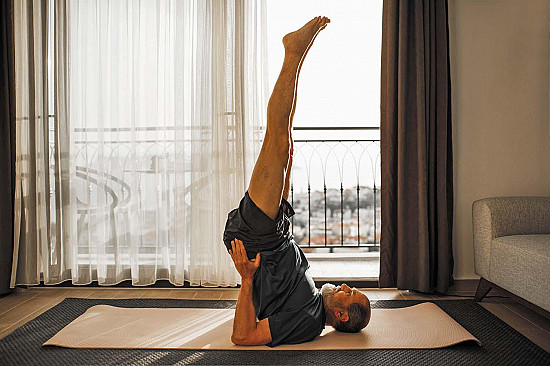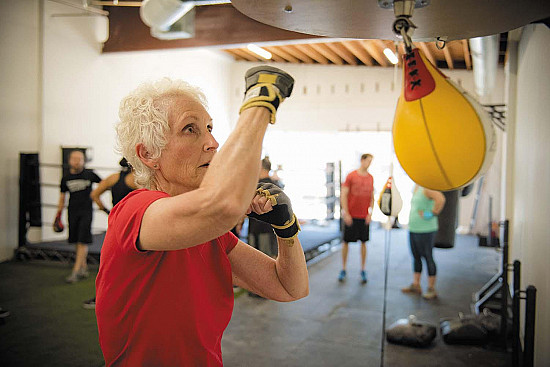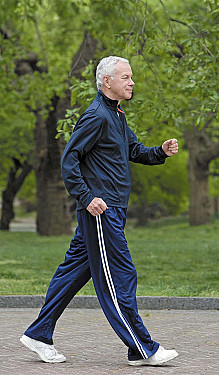The best core exercises for older adults
Strengthening your core will rev up your balance and stability.

After a long winter with lots of isolating and maybe too little physical activity, it might be time to give your core muscles more attention.
These muscles, located throughout much of your trunk, are the key to supporting your lower back and helping you stand, get out of a chair, bend, lift, and maintain your balance. So regular maintenance and tune-ups of the core muscles are important.
"Your core muscles provide stability for the moving parts above and below them — the mid-back, or thoracic, spine that helps you twist and turn, and the hips that move you up, down, back, or forward," explains Marty Boehm, a physical therapist with Harvard-affiliated Brigham and Women's Hospital.
Which muscles make up the core?
Generally speaking, the core starts at the lower rib cage and extends to the buttocks.
Core muscles in the abdomen include the long rectus abdominis muscles in the front; the external and internal obliques on the sides; and a wide, flat girdle in front called the transversus abdominis.
In your back, a group of muscles called the erector spinae help you stand up tall. The gluteal muscles in the buttocks help you extend your leg, push off from a starting point, walk, and climb stairs.
And in the pelvis area, the iliacus and the psoas muscles enable you to lift your legs and remain stable while standing; and the quadratus lumborum, a long muscle on each side, helps you bend to the side and back.
The worst core exercises
In the old days, sit-ups and crunches were the go-to moves to keep your core muscles in good shape. But those exercises are not as effective as we once believed. They strengthen only a few muscles, and they pose risks for older adults.
"They're dangerous because you're pulling on your neck," Boehm says. "And they don't train your core. They train the hip flexor muscles. If those muscles get too strong, they pull on the lower back and contribute to back pain."
The best core exercises
A much better approach to strengthening your core is working several core muscle groups at the same time, just the way you would naturally if you were lifting something or climbing. For older adults, Boehm recommends three exercises in particular:
Bridges. "Anyone can do a bridge. You start in a recumbent position on your back and then lift and hold your buttocks off the ground," Boehm says. "It's effective because you create rigidity from the rib cage to the pelvis and all the way from the belly button around to the back. The whole region becomes solid, and it creates a contraction of all the muscle groups, like a corset."
Planks. "Planks create contractions of the core, arm, and shoulder muscles as you stay in a push-up position. The key is staying as stiff as you can, like a wooden plank," Boehm says.
Opposite arm and leg raise. This exercise gets you on your hands and knees. "As you stretch out the opposite arm and leg, you're contracting your core and the muscles in the other arm and leg as they support you," Boehm points out. "Movements should be slow and controlled; don't throw your arm and leg out as fast as you can."
|
Bridge
Lie on your back with your knees bent and feet flat on the floor, hip-width apart. Place your arms at your sides. Tighten your buttocks, then lift your hips up off the floor until they form a straight line with your hips and shoulders. Hold. Return to the starting position. Repeat 10 times. Opposite arm and leg raise
Kneel on all fours, with your head and spine neutral. Extend your left leg off the floor behind you while reaching out in front of you with your right arm. Keeping your hips and shoulders squared, try to bring that leg and arm parallel to the floor. Hold, then return to the starting position. Repeat the exercise with your right leg and left arm. Repeat the exercise on both sides 10 times. Modified plank
Start on your hands and knees. Tighten your abdominal muscles and lower your upper body onto your forearms, aligning your shoulders directly over your elbows and keeping your feet in the air behind you. Keep your back straight, making your body as much like a "plank" as possible. Hold the position and return to the starting position. Repeat 10 times. Exercise photos by Thomas MacDonald |
Getting started
If you haven't worked your core in a long time, Boehm suggests starting slowly, focusing on the quality of the exercise and gradually increasing the number of times you can do it.
Unlike some muscle groups that should only be worked out every other day, core muscles can be strengthened daily. "The core should always be working. It doesn't need a lot of recovery," Boehm says.
Remember to do a warm-up before strengthening. March in place for a few minutes and move your arms around to get the blood flowing.
After strengthening, stretch your muscles, especially the hip flexors in the front of your pelvis and the hamstrings in the backs of the thighs.
"We want the core muscles to be short and tight," Boehm says, "Tightness will give it stability. But we want the muscles that surround it to be flexible."
For more information, check out the Harvard Special Health Report Core Exercises (/core).
Image: © Nastasic/Getty Images
Disclaimer:
As a service to our readers, Harvard Health Publishing provides access to our library of archived content. Please note the date of last review or update on all articles.
No content on this site, regardless of date, should ever be used as a substitute for direct medical advice from your doctor or other qualified clinician.


















